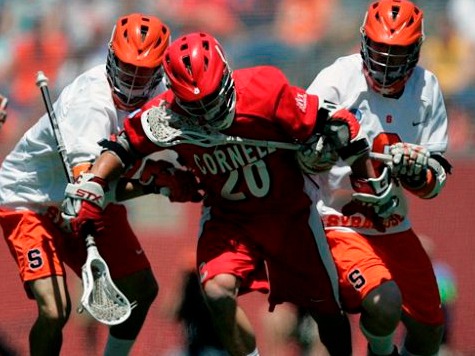This weekend, the NCAA Lacrosse Championship Tournament heats up with the quarterfinals at University of Maryland’s Byrd Field and Lucas Oil Stadium in Indianapolis.
Owing to the growth and dynamism of the sport, we’re now seeing a trending parity amongst colleges. Breaking from tradition, smaller programs are now able to recruit elite players from a deeper pool across the nation, and play at a level once reserved for just a handful of schools. Think of the NBA in the 80’s with the Celtics and Lakers winning eight championships between them. This has gone on in lacrosse for decades.
This year’s tournament is a standout in this regard, and a good argument can be made for any one of these teams walking away with the trophy next Monday.
Some key rule changes introduced this year have helped to speed up the game, but has also led to challenges as some programs have needed to adapt their strategies to accommodate the changes. Perhaps the biggest impact has been with the introduction of the shot clock.
While it is not technically in effect on every possession, if a ref deems a team to be “stalling”, by passing the ball around without trying to score, they will implement a shot clock, which means that the offense has thirty seconds to take a shot or forfeit possession.
This is a great change for fans, and for squads built around high powered offense, but can be a killer for teams that are either overmatched or out gunned, and can lead to lopsided games. A great example of this was during the Bryant vs. Syracuse game last week. While Bryant thoroughly dominated face-offs for possession, they just didn’t have the firepower to sustain their surprising 4-0 lead, were forced in to bad shots, and allowed Syracuse to skate to a relatively easy 12-7 victory. It will be interesting to see how schools adapt to these rule changes over the next few seasons.
Looking forward to this weekend’s quarterfinals, I’ve teamed up with John Jiloty, VP and Editor-in-Chief of Inside Lacrosse again this week to break down the upcoming match-ups and what to look for in each game.
Saturday Games:
Cornell -vs- Ohio State
Both teams are red-hot, balanced, and are putting up a lot of offense, but each have a solid defense as well. Keys for victory for Ohio State will be finding a way to stop the formidable Rob Parnell from scoring at will. For the Buckeye’s, they’ll need to get Logan Schuss, who has scored (incredibly) in every game he has played, active and productive for the entire game. Both teams are evenly matched, and victory won’t come easy for either team.
Yale -vs- Syracuse
Syracuse is the #1 seed in the tournament, so expectations are high. They surprisingly found themselves down early against Bryant last week and could be in big trouble against Yale if they lose the faceoff edge again. Syracuse has previously been known for lights out offense, but their defense has really stepped it up lately, while the offense, though efficient, isn’t as effective. Yale has quietly been very good the last couple years, is strong on faceoffs, and could walk away with a win if they can figure out how to pick the Syracuse defensive lock.
Sunday Games:
North Carolina -vs- Denver
If you’re the casual fan, and watch only one game this weekend, this should be it. Don’t be surprised to see both teams score in the upper teens. NC has maybe the strongest attack unit in the nation with standouts Marcus Holman, Jimmy Bitter, and Joey Sankey, and this unit will likely give Denver fits as they try to contain them. For Denver, middie Wesley Berg scored 8 goals last week, just one goal shy of NCAA tournament record, and almost single-handedly kept Albany in check. If he continues on that hot streak, the Tar Heels could be in for a long day. Either way, there should be plenty of action, and don’t be surprised if the winner is determined by who scores last.
Duke -vs- Notre Dame
Interesting game. They’ve faced each other quite a bit over the last few years, so they are familiar with each other’s tendencies, strengths, and weaknesses. Notre Dame, who salvaged their season last week with a torrid offensive outburst in the fourth quarter, can’t afford to get behind against a strong Duke team. Their strong suit is defense, so if they can hold back Duke’s scorers, they have a good chance of coming through the weekend with a win. Duke has a habit of starting the season slow and developing over the course of the season, and if they hold true to this form, it couldn’t happen at a better time.
X Factor: None of the goalies playing this weekend had stellar games in the opening round. The gold standard for goalies is a stopping percentage between 55-60% – and if one of them gets hot over the rest of the tournament, that could separate this year’s champion from the runner-up.
For complete NCAA Lacrosse coverage visit Inside Lacrosse.

COMMENTS
Please let us know if you're having issues with commenting.